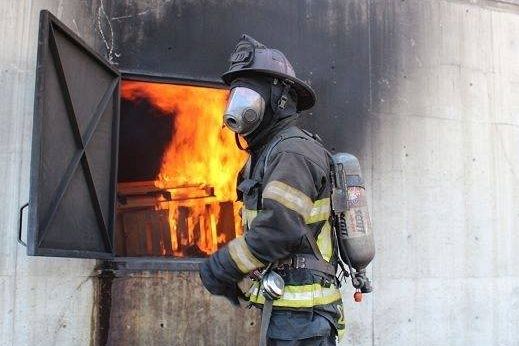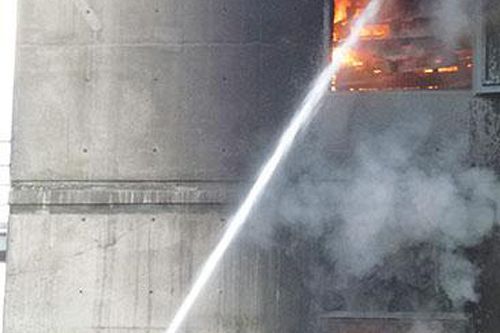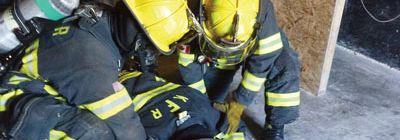
Minimum-Manning Response
May 19, 2022 by NEIL CAMPBELL
Having to initiate the rescue of a civilian from a structure fire will be one of the more pressure-filled moments in a firefighter’s career.
Career fire departments train to meet this challenge and try to ensure that they have all the resources required to be successful. Volunteer and minimum-manning response departments unfortunately don’t always have the manpower or the equipment to meet this challenge. The initial response for these departments could realistically be one engine and three or four firefighters, and no one else coming to help any time soon.
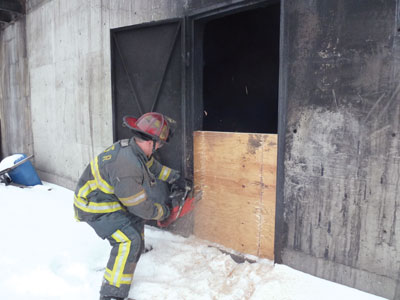
PHOTO 1: Use the saw to cut two vertical lines below the window ledge, each about three inches in from the window’s edge.
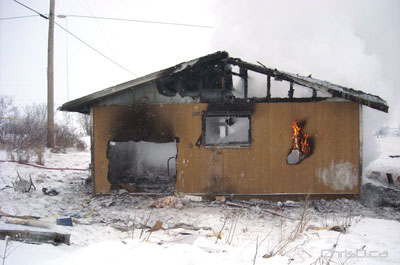
PHOTO 2: Firefighters used a chainsaw to cut through the wall of this residence in order to rescue a two-month-old infant. Unfortunately, she succumbed to her injuries later that night.
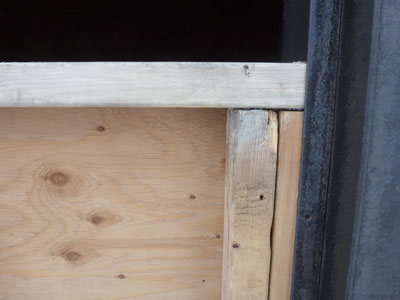
PHOTO 3: Most window ledges are constructed in the same way: a horizontal beam is supported by two cripples – vertical beams that run directly below the window ledge.
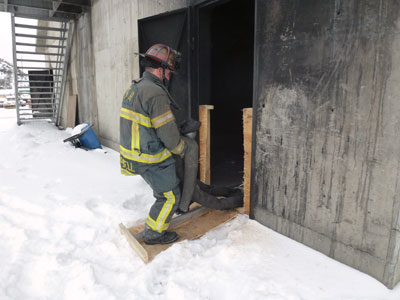
PHOTO 4: Once the cuts are complete, remove the bottom portion of the wall. Now access can be quickly gained into the structure.
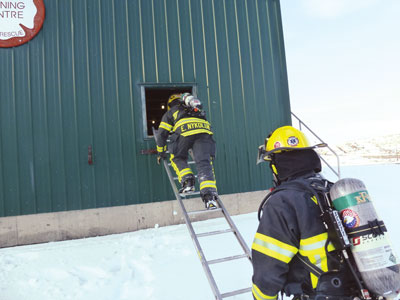
PHOTO 5: A ground ladder can be used in a rescue situation as well. Once the window has been breached, place the straight ladder on the windowsill.
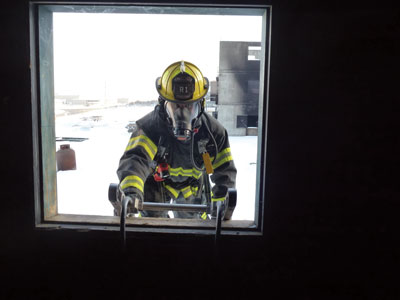
PHOTO 6: Two firefighters climb a straight ladder, making entry through the window and into the structure.
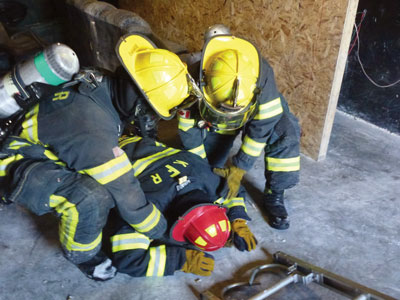
PHOTO 7: Firefighters prepare to load a victim onto the ladder, which is now inside the structure and will be acting as a stretcher.
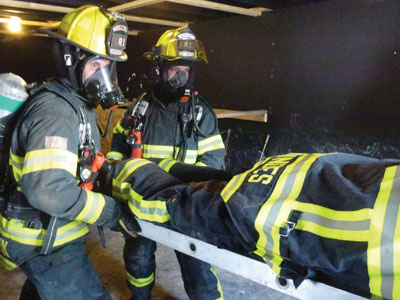
PHOTO 8: Once inside the structure, the rescuing firefighters load the victim – in this case a firefighter – onto the ladder, using it as a stretcher.
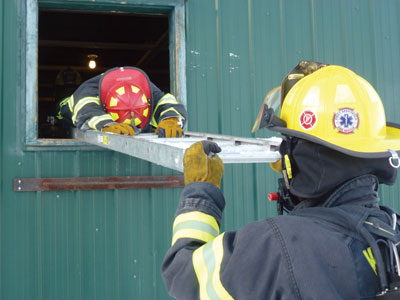
PHOTO 9: The firefighters inside the structure then slide the ladder, with the victim on top, out the window, to other firefighters waiting outside. photos By Neil Campbell
All fire departments need to maintain good skill sets with ground ladders. A realistic rescue scenario for any fire department is one during which the crew arrives on scene and a civilian is calling for help from a window. The quickest and safest way to rescue a civilian in this type of scenario is not to make entry into the structure and remove the victim through the heat and smoke, but to get the victim outside of the structure and into the fresh air, using a ground-ladder rescue.
This type of rescue works best when the civilians are able to assist in their own evacuation. There are times when that is not the case and firefighters have to be prepared to try different tactics to have a successful outcome.
At 12:30 p.m. on Jan. 16, 2011, there was a structure fire in a home in St. Theresa Point, Man. The fire began in a chimney attached to a wood-burning stove, spread into the attic and the rest of the home. There were six children, aged two months to 13 years old, in the home at the time. An adult relative who had been looking after the children had gone next door for a moment when the fire began. Four older children were able to escape the residence; however, a 16-month-old girl and a two- month-old girl were still inside the home. A band constable from St. Theresa Point entered the burning home through a bedroom window and rescued the 16-month- old girl. He was turned back by smoke and flames and could not reach the younger infant.
The band constable and a community member then cut a hole through the bedroom wall of the residence with a chainsaw and were able to reach the two-month-old (see photo 2). Both children were taken to the local nursing station for treatment. The two-month-old succumbed to her injuries and was pronounced dead at the nursing station.
This is a tragic story. But the courage of the constable and the imagination used to gain access to the home to initiate the rescue are impressive.
The idea of turning a window into a door to gain access to a structure is a rescue tactic that can be accomplished quickly and safely and is ideal for a minimum-manning response.
To initiate a window-into-a-door rescue quickly and effectively, firefighters need to understand some minor building construction features. The construction of the wall below the window ledge is very common – a 2 x 4 lying flat supported by several 2 x 4s positioned vertically. Two key structural members – called cripples – are positioned vertically and are located immediately below the side of the window ledge (see photo 3). The ideal point at which to start the cut with the chainsaw is three to four inches to the inside of the window; then run the cut in a downward motion all the way to the floor.
Safety is the first thing to be considered. All members on the fire ground must be wearing full PPE including gloves and eye protection. Bucking chaps are strongly recommended for those operating a chainsaw. Turn off all utilities to the structure as there is a possibility of receiving a shock from a household circuit when wires in the wall are cut. Breach the window and remove the glass. Position the bar of the saw on the ledge about three inches inside the window frame; this will ensure the cut is made through as few structural members as possible. Once the cut is initiated, try to maintain just enough of the bar through the wall to make the cut complete. There is always the chance that the civilian you are trying to rescue is on the floor immediately next to the wall being cut. Continue the cut from the window ledge down to the floor and repeat the process on the other side of the window ledge until you have two cuts from ledge to floor (see photo 1 on page 60). Once the cuts are complete, pull the cut portion of the wall out and down from the structure. Access can be quickly made into the structure to attempt the rescue (see photo 4).
Entry into a structure can be accomplished with a ground ladder for rescue as well. A straight ladder or roof ladder works very well for this tactic. The window is breached and a straight ladder is placed on the windowsill (see photo 5). Two firefighters climb the ladder and make entry through the window and into the structure (see photo 6). The ladder is then slid into the structure. Once inside the structure, the two firefighters load the civilian – in this case a firefighter – onto the ladder and use the ladder as a stretcher (see photos 7 and 8). The ladder is raised to the horizontal position and the two firefighters slide the ladder out the window to firefighters waiting outside the structure (see photo 9). The civilian is removed from the ladder and the ladder is moved back into the structure to provide a means of egress for the two firefighters still inside.
These rescue tactics can be accomplished by career, volunteer or minimum- manned fire departments. All that is required is some basic training, a minimal amount of equipment and a willingness to do whatever it takes to have a successful outcome to a rescue scenario.
Insights
Keep up to date with training tactics and strategies for emergency responder safety and training programs. Industry leaders in safety and training programs share their insights on past and current trends and topics here.


